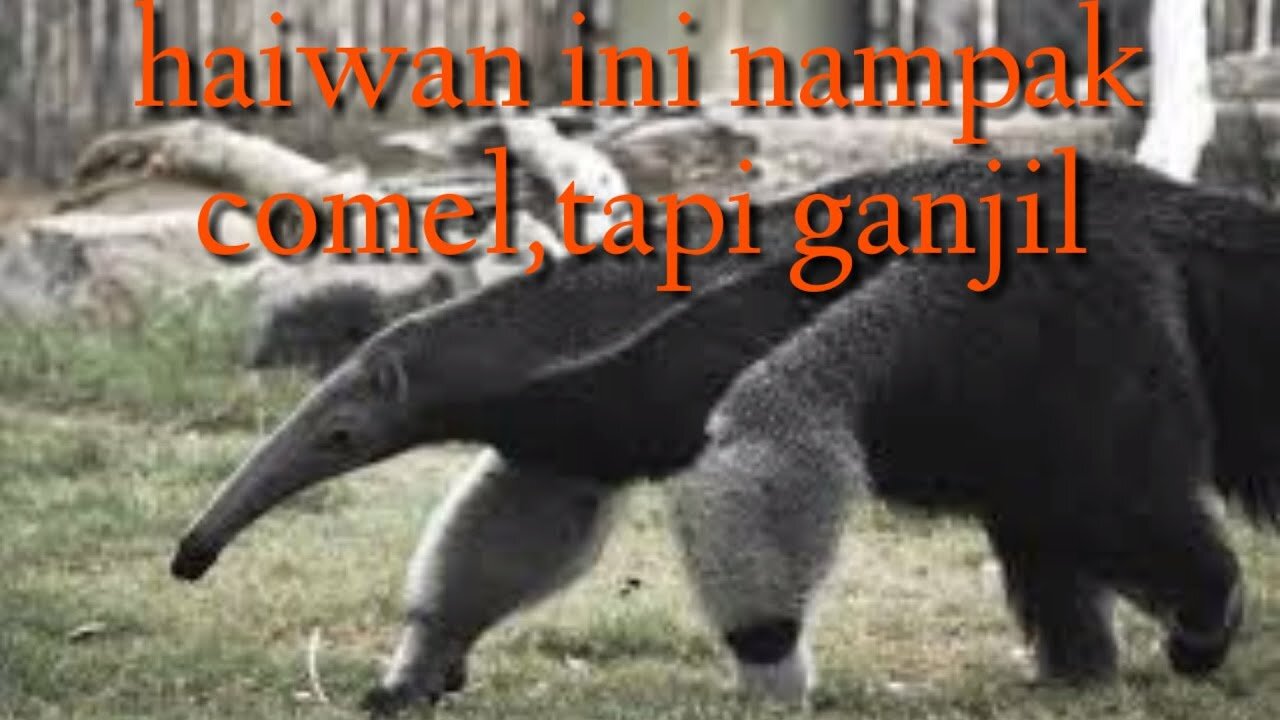Premium Only Content

the behavior of a giant anteater
**The Giant Anteater's Unique Behavior**
The giant anteater, a curious and fascinating creature, has a unique behavior that is both fascinating and intriguing. Here's a glimpse into their daily habits:
**Foraging for Food**: Giant anteaters are nocturnal animals, spending most of their night searching for food. They use their long, sticky tongues to catch ants, termites, and other insects, which they devour with relish.
**Snout Power**: Their powerful snouts are equipped with a specialized tongue and a unique set of teeth that allow them to scrape up and break open termite mounds. This remarkable ability is crucial for their survival.
**Solitary Creatures**: Giant anteaters are solitary animals, only coming together for mating or to protect their young. They have a large home range, which they mark with their scent to keep other anteaters away.
**Slow Movers**: Despite their impressive size, giant anteaters are slow-moving animals, preferring to walk or amble rather than run. This is likely due to their slow metabolism and the need to conserve energy.
**Burrowing Behavior**: These incredible creatures are skilled burrowers, using their powerful claws and strong legs to dig complex networks of tunnels and dens. They line these burrows with leaves and grasses to create a cozy and safe habitat.
**Unique Communication**: Giant anteaters communicate with each other through a series of grunts, snorts, and even scent markings. They also use their keen sense of smell to detect potential threats or find food.
**Conservation Status**: Unfortunately, the giant anteater is listed as Vulnerable on the IUCN Red List due to habitat loss, fragmentation, and human persecution.
**Hashtags**: #GiantAnteater #UniqueBehavior #NocturnalAnimals #Insectivore #SolitaryCreature #BurrowingBehavior #ConservationConcern
-
 UPCOMING
UPCOMING
Producer Michael
13 hours agoI GOT PULLED OVER BY THE POLICE IN MIAMI!
111 -
 1:21:53
1:21:53
MTNTOUGH Fitness Lab
18 hours agoThe Fight That Almost Destroyed Jim Miller (& How He Overcame It) to Break UFC Records
136 -
 24:46
24:46
Cooking with Gruel
1 day agoFeeding Hope - LA Wildfire Relief from the People
3853 -
 14:34
14:34
MichaelBisping
10 hours agoSean Strickland CONFRONTS Bisping! 'Pereira in Corner, Dricus and Khamzat!' (EXCLUSIVE INTERVIEW)
1622 -
 59:54
59:54
Trumpet Daily
17 hours ago $3.19 earnedThe Trade War Ends - Trumpet Daily | Feb. 4, 2025
3.25K7 -
 5:44
5:44
DropItLikeItsScott
10 hours agoA Must Have Shotgun - GARAYSAR Fear 116
442 -
 56:14
56:14
PMG
16 hours agoHannah Faulkner and John Strand | BLANKET PARDON FOR ALL J6er's
307 -
 48:51
48:51
State of the Second Podcast
13 hours agoWhy Does Palmetto State Armory Keep Winning?
921 -
 32:01
32:01
SB Mowing
25 days agoHer Tears Said It All: “My Prayers Have Been Answered”
21.6K33 -
 3:28:55
3:28:55
Price of Reason
12 hours agoTrump Means Business! Disney's F4 Hail Mary Pass! Assassin's Creed Shadows Art Book SUCKS?
54.7K10